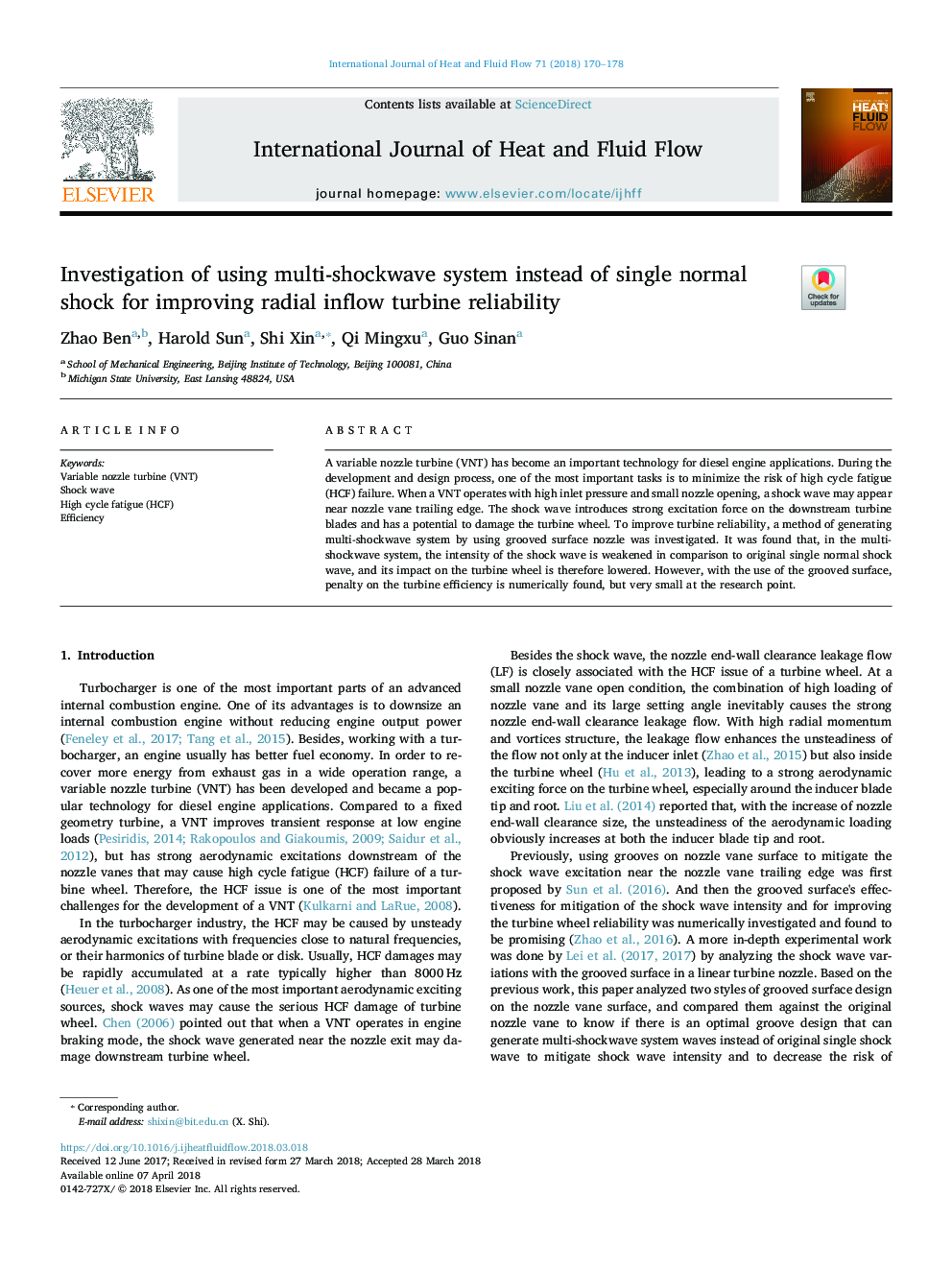| Article ID | Journal | Published Year | Pages | File Type |
|---|---|---|---|---|
| 7053458 | International Journal of Heat and Fluid Flow | 2018 | 9 Pages |
Abstract
A variable nozzle turbine (VNT) has become an important technology for diesel engine applications. During the development and design process, one of the most important tasks is to minimize the risk of high cycle fatigue (HCF) failure. When a VNT operates with high inlet pressure and small nozzle opening, a shock wave may appear near nozzle vane trailing edge. The shock wave introduces strong excitation force on the downstream turbine blades and has a potential to damage the turbine wheel. To improve turbine reliability, a method of generating multi-shockwave system by using grooved surface nozzle was investigated. It was found that, in the multi-shockwave system, the intensity of the shock wave is weakened in comparison to original single normal shock wave, and its impact on the turbine wheel is therefore lowered. However, with the use of the grooved surface, penalty on the turbine efficiency is numerically found, but very small at the research point.
Related Topics
Physical Sciences and Engineering
Chemical Engineering
Fluid Flow and Transfer Processes
Authors
Zhao Ben, Harold Sun, Shi Xin, Qi Mingxu, Guo Sinan,
